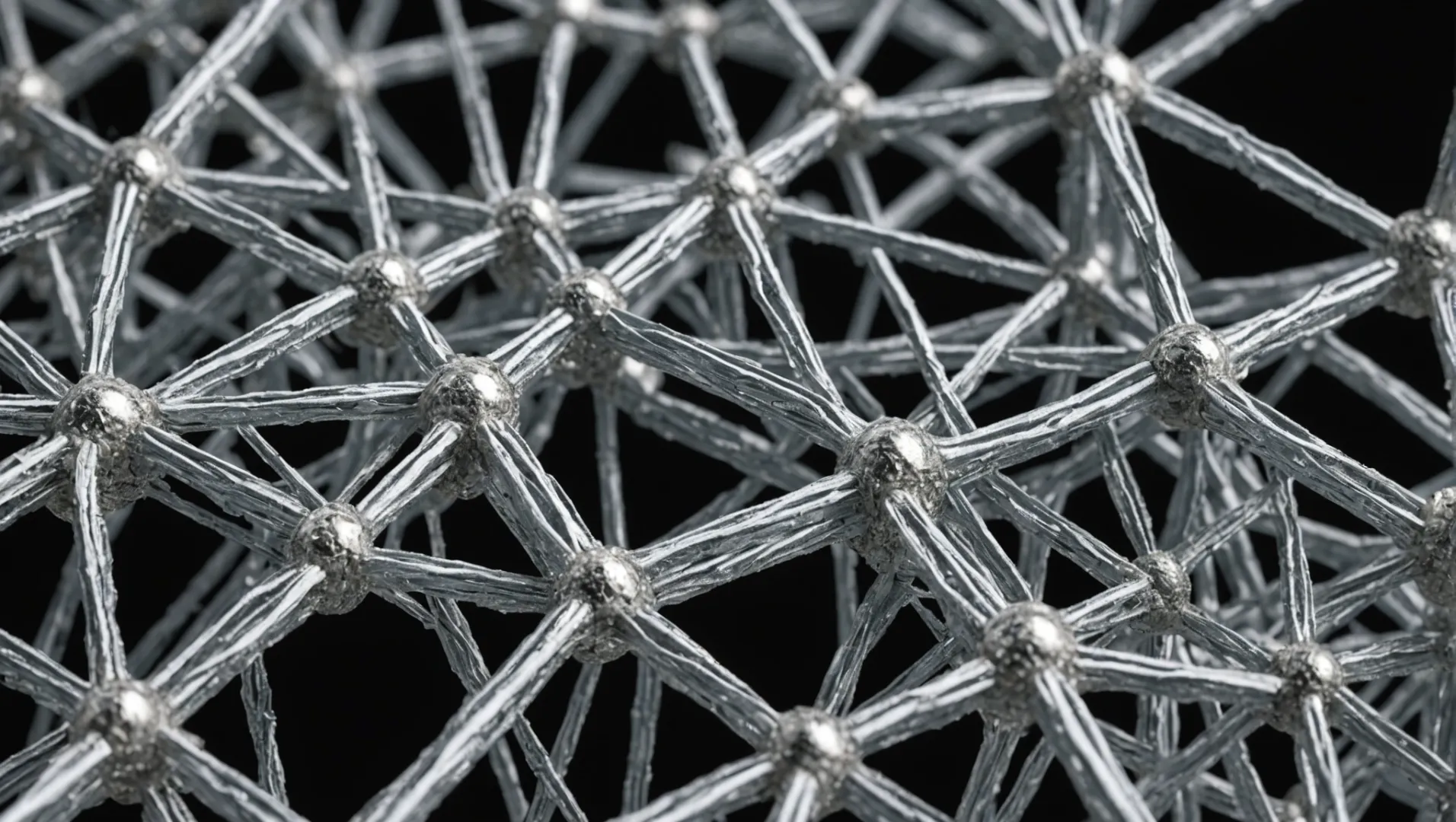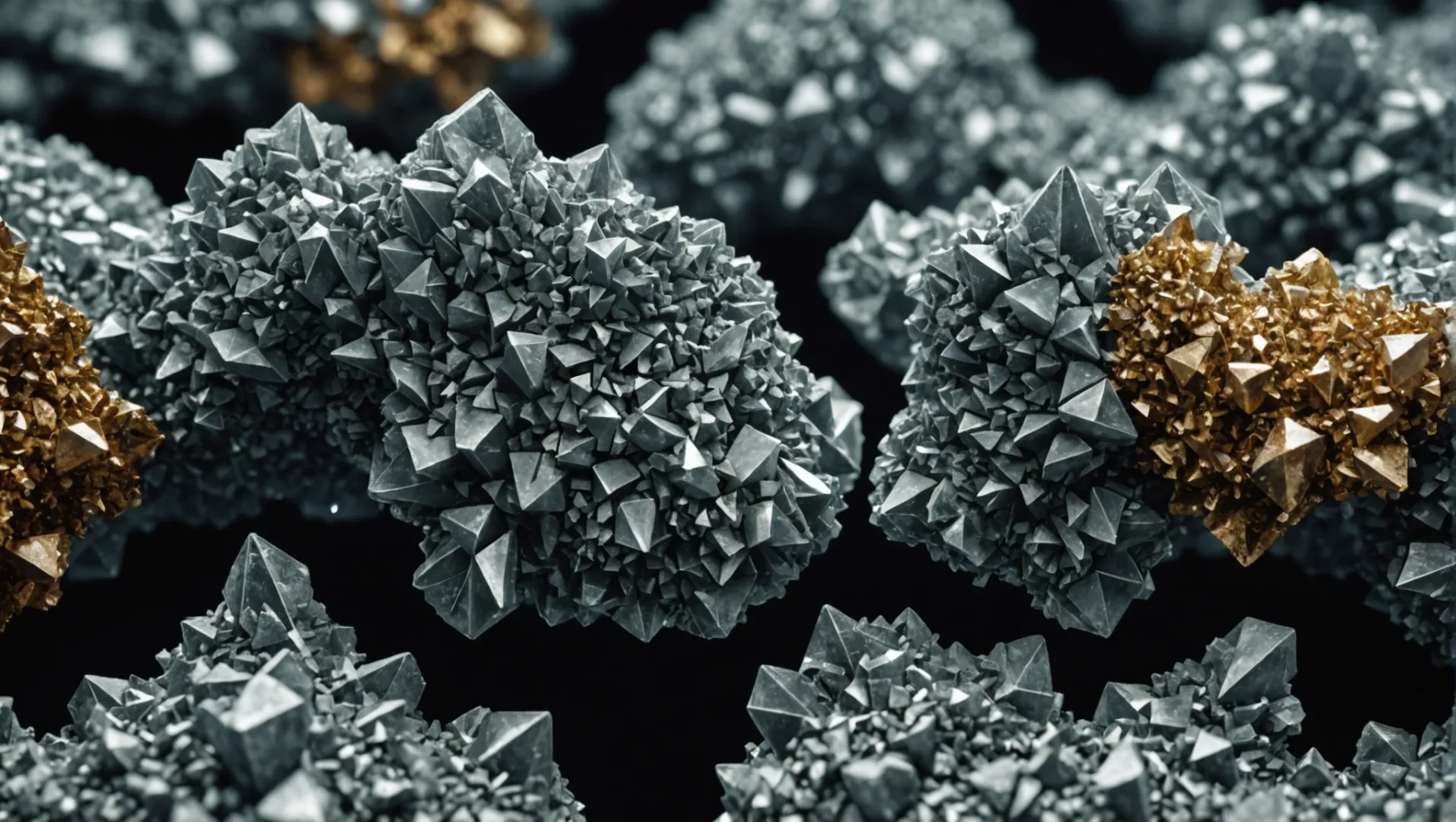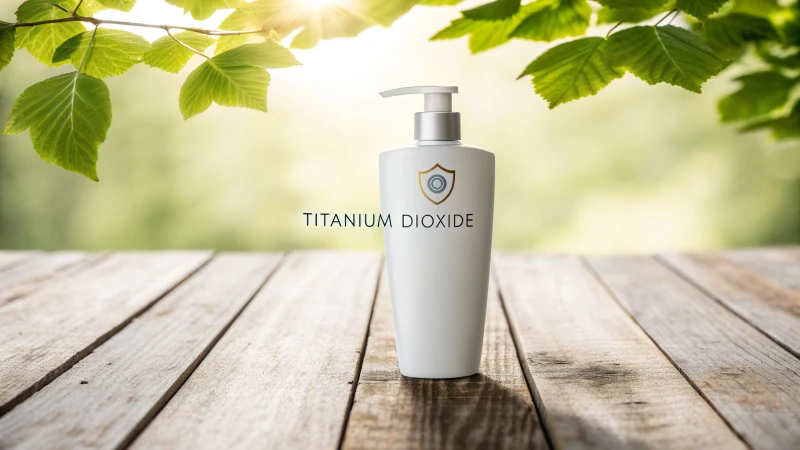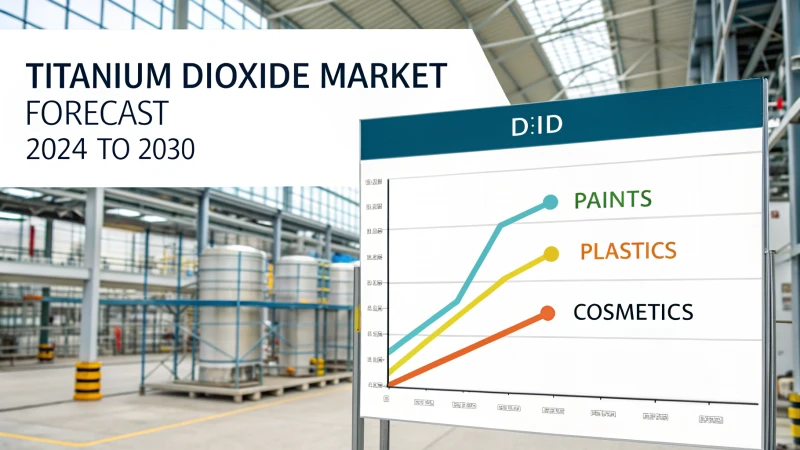
Ever felt overwhelmed choosing between rutile and anatase TiO2? I sure have!
Rutile TiO2 is denser and more stable than anatase TiO2, making it ideal for outdoor applications requiring durability and UV resistance. In contrast, anatase is lighter and more photocatalytic, suited for applications like air purification but less stable in long-term outdoor use.
But hey, let's not just stop at these basics! Let’s dive into how these differences play out in the real world and help you decide which one aligns perfectly with your project goals.
Rutile TiO2 is denser than anatase TiO2.True
Rutile's compact tetragonal structure contributes to its higher density.
How Does Crystal Structure Affect TiO2 Performance?
The crystal structure of TiO2 determines its properties, influencing its application effectiveness.
The performance of TiO2 is heavily influenced by its crystal structure. Rutile and anatase, the two primary forms, differ in density, stability, and photocatalytic activity. Rutile's denser and more stable structure makes it ideal for UV-resistant applications, while anatase's reactivity is preferred for photocatalytic uses like air purification.

Understanding Crystal Structures of TiO2
Titanium dioxide (TiO2) exists mainly in two polymorphs: rutile and anatase. Each has unique characteristics due to differences in their crystal structures1. Rutile, with its tetragonal structure, is the more stable form at all temperatures. It has a compact arrangement that contributes to its higher density and refractive index. This makes rutile ideal for applications needing opacity and UV resistance.
On the other hand, anatase also possesses a tetragonal structure but with a more open framework. This openness results in lower density and a greater surface area compared to rutile. These properties enable better photocatalytic activity, which is beneficial for applications like air purification systems2 and self-cleaning surfaces.
Impact on Photocatalytic Activity
The crystal structure plays a pivotal role in TiO2's photocatalytic performance. Anatase exhibits superior photocatalytic activity compared to rutile due to its larger band gap energy. This characteristic allows anatase to effectively utilize UV light to generate electron-hole pairs crucial for breaking down organic pollutants.
However, rutile's stability under sunlight exposure is unmatched, making it the preferred choice for outdoor applications where durability is paramount. A comparison of photocatalytic efficiency between rutile and anatase can be seen in the table below:
| Property | Rutile | Anatase |
|---|---|---|
| Stability | High | Moderate |
| Density | High | Low |
| Photocatalytic Activity | Moderate | High |
Applications Driven by Crystal Structure
The choice between rutile and anatase often depends on the specific requirements of an application. For instance, in the paint industry, the opacity and UV resistance of rutile are essential for coatings that withstand weathering effects. Conversely, anatase is favored in technologies requiring efficient photocatalysis, such as water purification systems.
Understanding how crystal structure affects TiO2 performance allows industries to tailor solutions that maximize efficiency and longevity. The interplay between these structures underscores the importance of selecting the appropriate form based on intended use and environmental conditions.
Rutile TiO2 is denser than anatase TiO2.True
Rutile's compact crystal structure results in higher density.
Anatase TiO2 has higher UV resistance than rutile.False
Rutile is more stable and UV-resistant, unlike anatase.
What Role Does Stability Play in Choosing TiO2?
Stability is a crucial factor in selecting titanium dioxide (TiO2) for your project’s longevity and effectiveness.
Stability determines TiO2's suitability for different environments, influencing durability, performance, and application feasibility. Rutile TiO2, with its superior stability, is preferred for outdoor and long-term use, whereas anatase is suitable for controlled, indoor environments due to its lower stability.

Understanding Stability in TiO2
The stability of titanium dioxide (TiO2) primarily influences its performance in various environments. When selecting between the two primary forms of TiO2—rutile and anatase—understanding their stability can guide you towards making an informed decision. Rutile TiO23 is renowned for its stability, making it the go-to choice for applications requiring long-term exposure to harsh conditions, such as UV light and weathering. On the other hand, anatase4 offers high photocatalytic activity but lacks the structural stability needed for prolonged outdoor use.
Rutile: The Choice for Stability
Rutile's crystal structure contributes to its robustness and density, ensuring it remains stable under extreme conditions. This makes it suitable for products that require high resistance to degradation, such as paints and coatings exposed to sunlight. Its ability to maintain integrity over time reduces the need for frequent maintenance or replacement, thus lowering long-term costs.
Advantages of Rutile:
- Higher Density: Provides excellent coverage and durability.
- UV Resistance: Ideal for outdoor applications.
- Long-Term Stability: Reduced degradation over time.
Anatase: Leveraging Reactivity
While anatase may not match rutile in terms of stability, its lighter structure and enhanced reactivity make it ideal for indoor applications. In environments where photocatalytic activity is desirable—such as air purification systems or self-cleaning surfaces—anatase excels. However, it's important to note that its reactivity can lead to faster degradation when exposed to environmental stressors like UV radiation.
Situations Where Anatase Shines:
- Photocatalysis: Effective in breaking down pollutants indoors.
- Lightweight Applications: Easier to apply in specific contexts.
Practical Considerations
When choosing between anatase and rutile, consider the environmental conditions your product will face. Assessing factors such as exposure to UV radiation, humidity, and temperature fluctuations will help determine which form's stability aligns with your project goals. Review case studies or consult with experts in materials science to better understand how each polymorph performs under various conditions. This consideration ensures optimal performance and longevity for your application.
Rutile TiO2 is preferred for outdoor use due to its stability.True
Rutile's robust crystal structure offers superior stability in harsh conditions.
Anatase TiO2 is more stable than rutile for outdoor applications.False
Anatase lacks the structural stability needed for prolonged outdoor use.
Which TiO2 Form Is Better for Photocatalytic Applications?
Choosing the right form of titanium dioxide can greatly enhance photocatalytic efficiency.
Anatase TiO2 is superior for photocatalytic applications due to its higher reactivity and larger surface area, making it effective in light-driven reactions for air purification and self-cleaning technologies.

The Photocatalytic Edge of Anatase TiO2
Photocatalysis relies on a material's ability to harness light energy and drive chemical reactions. Anatase titanium dioxide (TiO2) stands out in this regard because of its exceptional light absorption properties and high reactivity5. The crystal structure of anatase provides a larger surface area compared to rutile, facilitating more active sites for reactions, which is crucial in applications like air purification and water treatment.
Surface Area and Reactivity
The surface area of anatase TiO2 allows it to interact more efficiently with pollutants. This increased interaction enhances its ability to break down organic compounds and kill bacteria, making it ideal for air purifiers and self-cleaning surfaces. In contrast, rutile, with its denser structure, offers fewer active sites for such interactions.
Energy Band Gap Considerations
The energy band gap of anatase is narrower compared to rutile, meaning that anatase can be activated by UV light more efficiently. This property not only boosts its photocatalytic activity but also makes it suitable for indoor environments where natural UV light is limited. Understanding how energy band gap6 affects these reactions helps in tailoring the TiO2 application to specific conditions.
Limitations in Outdoor Use
Despite its superior photocatalytic abilities, anatase is less stable than rutile when exposed to prolonged outdoor conditions. Its lower stability can lead to degradation over time, reducing its effectiveness in applications that demand high durability under constant UV exposure.
Ultimately, while anatase TiO2 is the preferred choice for applications requiring high reactivity and efficiency in light-driven processes, considerations about the environment and longevity should guide its application. For more detailed insights on how anatase and rutile perform under various conditions, explore further studies7 on these two polymorphs.
Anatase TiO2 has a larger surface area than rutile.True
Anatase's crystal structure provides more active sites for reactions.
Rutile TiO2 is more stable outdoors than anatase.True
Rutile is denser, offering higher stability under UV exposure.
How Do Rutile and Anatase Differ in Industrial Uses?
Understanding the industrial applications of rutile and anatase TiO₂ can optimize your material selection.
Rutile is preferred for outdoor applications due to its stability and UV resistance, while anatase is chosen for indoor uses requiring photocatalytic activity.

Outdoor Applications
Rutile titanium dioxide (TiO₂) shines in outdoor applications where durability and longevity are crucial. Its dense crystal structure contributes to high stability and resistance to UV degradation, making it ideal for use in paints, coatings, and plastics exposed to sunlight. The high refractive index of rutile also ensures superior opacity, providing excellent coverage and protection from environmental elements.
In contrast, anatase TiO₂ lacks the same level of stability and is more prone to phase changes when subjected to UV light over prolonged periods. Thus, it's less suited for outdoor environments but not without its merits.
Indoor and Photocatalytic Applications
Anatase TiO₂ excels in photocatalytic activities, which are crucial for air purification systems and self-cleaning surfaces. Its ability to react with light makes it effective in breaking down organic pollutants and bacteria, transforming indoor environments into cleaner spaces. This reactivity, however, limits its use to conditions where exposure to harsh elements is minimized.
| Property | Rutile TiO₂ | Anatase TiO₂ |
|---|---|---|
| Density | High | Low |
| Stability | High | Low |
| Opacity | Superior | Moderate |
| Photocatalytic | Limited | High |
Industrial Selection Criteria
When selecting between rutile and anatase for industrial applications, consider the specific needs of your project. For applications requiring high durability8, such as outdoor coatings or automotive paints, rutile's properties align well with the demands. However, if your focus is on creating innovative indoor solutions that leverage light-driven reactions, anatase is the preferred choice.
Both forms have unique strengths: rutile offers coverage and strength, while anatase provides reactivity. Understanding these differences helps in making informed decisions based on application requirements.
Rutile TiO₂ is more stable outdoors than anatase.True
Rutile's dense structure offers high UV resistance, ideal for outdoor use.
Anatase TiO₂ is preferred for outdoor applications.False
Anatase lacks stability in UV light, making it unsuitable for outdoors.
Conclusion
Consider your application's needs when choosing between rutile and anatase. For durability and opacity, choose rutile; for photocatalytic properties, opt for anatase.
-
Discover detailed structural differences between rutile and anatase forms.: Crystal structures of TiO2: (a) Rutile; (b) Anatase; (c) Brookite; and (d) TiO2(B), red spheres represent Ti atoms, and the grey spheres represent O atoms . [37]. ↩
-
Explore how anatase TiO2 enhances air purification systems.: Titania (TiO2) is the most widely used photocatalyst for decomposition of organic pollutants because it is chemically stable and biologically ... ↩
-
Explore why rutile's structure enhances its stability.: A longer electron-hole pair life in anatase than in rutile would make it more likely for charge carriers to participate in surface reactions. ↩
-
Discover how anatase's properties enhance its reactivity.: The band gap of TiO2 is larger than 3 eV (~3.0 for rutile and ~3.2 for anatase), thus making pure TiO2 primarily active for UV light. ↩
-
Learn why anatase's structure enhances its photocatalytic efficiency.: The band gap of TiO2 is larger than 3 eV (~3.0 for rutile and ~3.2 for anatase), thus making pure TiO2 primarily active for UV light. ↩
-
Discover the impact of energy band gaps on TiO2 performance.: In TiO2, the phase anatase has a larger band gap energy than rutile. This reduces the light absorbed, but the valence band will increase to higher energy levels ... ↩
-
Explore comprehensive studies comparing anatase and rutile properties.: Generally, anatase is more active than rutile, but no consensus exists to explain this difference. Here we demonstrate that it is the bulk transport of ... ↩
-
Discover why rutile is preferred for durable outdoor coatings.: Rutile TiO2 pigments are preferred because they scatter light more efficiently, are more stable and are more durable than anatase pigments. Titanium dioxide ... ↩





